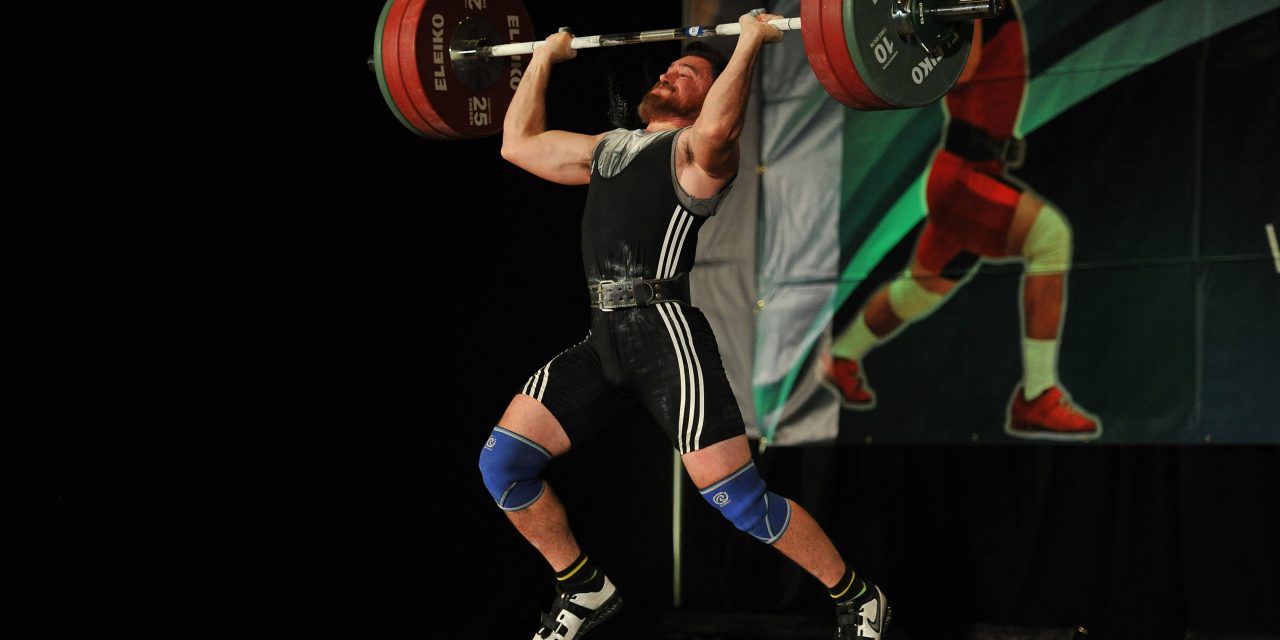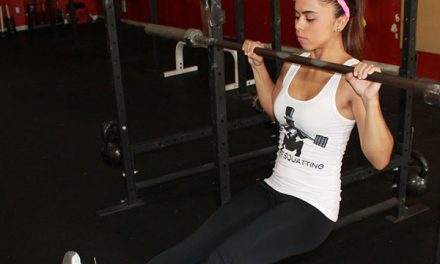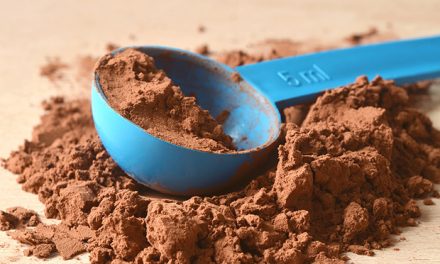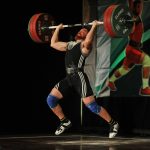What if I told you skinning a cat and performing a clean and jerk had a lot in common?

Before you call me crazy let me explain.
There are many correct, and useful, ways to learn and complete any task, and the Sport of Weightlifting is no different. Considering that more CrossFit Athletes weightlift than Weightlifters weightlift, alternative introductory progressions should be considered to accommodate their incoming skill sets.
The fact is most athletes new to Weightlifting are not coming with clean slates. Often times they are banged up, beaten down, and have developed movement patterns that will need adjusting.
In this article, I make the case for a bottoms up Weightlifting progression for CrossFit Athletes and provide a place to start integrating more granular Weightlifting movement practices.
The Circle of Training: How CrossFit led me to Weightlifting, and Weightlifting led me to helping CrossFitters weightlift.
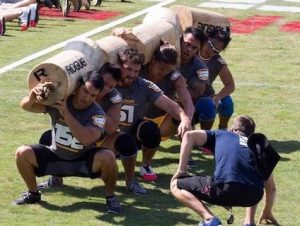
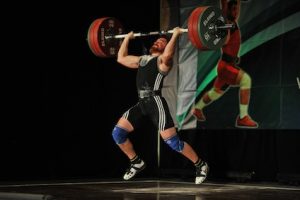
I came to Weightlifting through Crossfit and facts are that my story is becoming the norm. Participation in USAW meets are up at all levels and the majority of that participation is a direct result of CrossFit. Take the Master’s level for instance. 500 plus competitors flocked to Savannah this year despite rising totals and increased costs to entry.
My journey to full time Weightlifter started In 2013. With a CrossFit Games appearance behind me and wanting little to do with a metcon ever again, I stumbled upon Weightlifting Coach Stephen Powell. Coach Powell introduced me to “Chinese” Weightlifting. The concepts were completely opposite of everything I had learned to do with a barbell through CrossFit and USAW.
Where my early introduction to Weightlifting focused on pulling through my heels, jumping under the bar, and getting as fast as possible as fast as possible, Coach Powell’s methods focused on pushing with my quads, connecting with the barbell, and establishing movement control.
Around that same time I also began interacting with Coach Wu Chuanfu out of Singapore via teleconferencing. Coach Wu taught me that strength was not the only characteristic needed to be a proficient Weightlifter. Concepts like tempo, skill and timing were also critical to performing the snatch and clean and jerk.
Both coaches also placed a great deal of emphasis on my positioning as the barbell broke off the floor, rather than what I looked like receiving the barbell. In both cases I was forced to move slowly and correctly before “fastly” and aggressively.
The different approach helped me bust through an 18 month lifting plateau and was a large reason I qualified for the USAW National Championships in 2014 and 2015.
The total of my experiences has led me to believe that teaching the snatch and the clean from the bottom up is a much more efficient process for athletes coming from a CrossFit background.
In most cases CrossFit Athletes new to Weightlifting know what the movements are, have a decent strength base, and have been cycling lighter loads for time. In my mind this demonstrates a capacity bias.
Considering this I start teaching CrossFit Athletes Weightlifting concepts with short, controlled, and very specific movements that place an emphasis on skill and positioning.
What Movements, Skills and Positions to Emphasize
Partial Pulls
Teaching pulling mechanics in parts with a silent return to the floor is a great place to start. Begin with having your newbie move the barbell from the floor to their knee. Then practice moving from the knee to the hip. End with the development of the finish, or full and violent extension of the body.
Partial Pull Clips
Controlled Partial Snatch With Silent Return
https://www.youtube.com/watch?v=3NHRfWbyVHc
In the clip above you may notice that my heels are slightly elevated. I don’t want to get to far into the weeds but being able to pull in this fashion demonstrates balance. If the athlete falls backward it’s a sign they want to go to the heels to early. If the they stumble forward they are over emphasizing their quads. This is a tricky way of placing the emphasis on skill, not capacity.
As athletes become comfortable and move naturally with these small movements, begin blurring the lines between them, and the full patterns will begin to take shape. A critical component in the successful implementation of this process is giving athletes, no matter how big or small the movement, a clear place to start and finish each movement.
“Today we are working from your set up to the knee.”
This idea is not limited to snatch and clean variations.
Squeezing the barbell into the hip utilizing the lats is an idea foreign to most Crossfit athletes. It’s a pesky problem that results in horizontal hip thrusts and banging the barbell away from the body. A simple fix I implement often is “The Squeeze.”
https://www.youtube.com/watch?v=7ibpZi-Keq0
This drill is a triple whammy of skill, isolation strength exercise, and stability. The skill being keeping the bar close. The isolation comes at the lat. Lastly, the stability piece is holding the hang position while performing the reps and sets.
Pauses
Having athletes perform pauses in order to deepen their understanding, feeling, and experience in the proper positions is also a great practice.
Pauses are also great for developing stability which is a critical component of all movement. Without stability athletes cannot express strength.
Snatch Pull With a Pause at Knee
https://www.youtube.com/watch?v=t51lWf7uf7w
Moving short distances over long periods of time correctly, just isn’t in the CrossFit playbook. Weightlifting coaches working with CrossFit athletes can facilitate a great deal of progress by exploiting this.
How Partial Movements and Pauses Can Help the Coach
Teaching partial movements from the bottom up produces simple progressions that benefits the athletes movement and allows the coach to zero in of simple patterns. Partial movements and pauses at critical landmarks also allows the coach to be very hands on and manipulate the athlete to achieve optimal positioning.
Take for instance the lifter’s back.
Across body type and style, in both the clean and snatch, a consistent and constant back angle should be maintained as the barbell breaks from the floor.
If the athletes back changes in any way during the initial break of the barbell from the floor a pulling imbalance has occurred or a lack of structural integrity has been exposed. The newer the athlete is to Weightlifting the more emphasis the coach should place on this concept.
In contrary, asking novice athletes to jump under a barbell at full speed has the potential to yield multiple deficiencies including, footwork, timing, and/or strength. Moving too fast, too soon, with new movements makes it very difficult to prioritize and individualize an athlete’s progression.
Once quality and natural positions are demonstrated consistently with short and slow movement patterns I like to begin working the idea of TEMPO.
Full pulling variations like the classic deadlift, high pulls, speed pulls and the full lifts can be introduced with the idea of accelerating the bar into the hip. The general idea is moving from controlled to fast over the course of the movement.
Think of a vehicle stuck in the mud or on ice. If you were to punch down on the accelerator you would spin your tires and go nowhere. Yanking, or pulling the barbell off the floor produces similar results. By integrating the idea of tempo into your lifting you will gain more control of the barbell and your bar path will be much more efficient.
Thoughts on Programming Bottoms Up Concepts into a CrossFitters Regime
Crossfit Athlete are doing a ton of hard work.
Like it or hate you are not going to get anywhere with a CrossFit athlete by telling them to do less. If you have their interest you also do not want to push them away by telling them the sport they love to train is hurting the sport they are curious about trying.
I never over program with new athletes. Instead, offer a few tips or tricks for them to try before or after their “WOD.”
I have had success asking interested CrossFit Athletes to add skill based work to their warm up and controlled dropped sets to their post conditioning or heavy lifting.
Emphasizing Skill
Warm ups are done with rowers, on sidewalks, or utilize a jump rope to literally raise the temperature of the body. If you are lucky, folks may step into or grab a super band to “supple” up.
However you warm up, the characterization is often of mindless activity with the goal of getting you sweaty. This is ok and necessary but it should not involve a barbell.
The fact is that most folks, not just Crossfit athletes, blow off working with an empty barbell. I think this has a lot to do with terminology and the emphasis the coach places on instruction.
It is essential as a Weightlifting coach to be stern regarding how athletes interact with the barbell if Weightlifting is the goal.
“We don’t warm up with the barbell. We practice and develop skills with the barbell.”
I love high rep and thoughtful complexes for this purpose. You can do the complex below with a snatch or clean grip to dialing in your pulling mechanics. These complexes are also a great place to emphasize little things like the use of the hook grip.
During each movement and rep have the athlete focus on keeping the bar in contact with their body creating as little friction as possible.
THINK SLIDE!
5 Reps – Breaking the Bar. Move the barbell from your set up to your knee in a controlled manner.
5 Reps – Lat Squeeze. Move the barbell from your knee to your hip using only our lats.
5 Reps – High Pull. Utilizing a full and violent extension of your body place the bar under your chin.
5 Reps – Front or Overhead head squat depending on the movement in that session.
Clean Variation – https://www.youtube.com/watch?v=VJCcd6fY-dE
Snatch Variation – https://www.youtube.com/watch?v=7o2YJakYFyM
Integrating Drop Sets
Your average CrossFitter is already doing a ton of work. Simply asking for 3 to 5 sets of 3 or less reps will be more than enough for most CrossFit Athletes following training. The devil is in the details.
After working their working sets/conditioning effort have ask the athlete to perform 3 to 5 sets of 3 reps, working from their set up to their knee at 75% of whatever their best (not heaviest) working set was in the workout. Have them rise at a 5 second tempo, hold for 5 more seconds at the knee, then return the barbell to the ground without noise.
Three reps of that will give them all they can handle. Try it yourself.
These sort of drop sets will also dial in necessary patterns to move larger loads down the line. The goal with these drop sets is training the musculature and CNS to move well, not just move or make them tired.
These sets are also are great place to focus on prompting specific stimulus. Working at lower percentages for higher repetitions will promote conditioning and hypertrophy. Working at higher percentages and lower reps will promote strength and power.
It is my opinion that coaches and athletes do not like working from the bottom up because it’s not sexy. What attracts CrossFit athletes to Weightlifting is going overhead with big weights fast. The last concern for CrossFit athletes in regards to Weightlifting is quality of movement. This concern doesn’t begin to take hold until a lengthy plateau needs breaking, an injury occurs, or they actually witness a proficient mover efficiently take their one rep max to the woodshed with little effort.
When working with new athletes, and many of them are CrossFitters, it’s very much my goal that they see Weightlifting as a movement sport, not a strength sport. The fact is they are probably pretty strong and have been doing a lot of work. If I can get them focused on quality movement mechanics and provide a little contrast to their current regime the chances are that they will stick around, ask for more, and total more.
Joe Szymanek is the Co Host of the Doc and Jock Podcast and the head Coach at Joe’s Barbell. If you’re interested in his Everyday Weightlifter training guide, learning more about his take on training, and optimizing your time in the gym check the links below.
Everyday Weightlifter Training Guide
http://joesbarbell.com/the-everyday-weightlifter-program-week-1/
Doc and Jock Podcast Episode 183: Weightlifting for the Generalist
